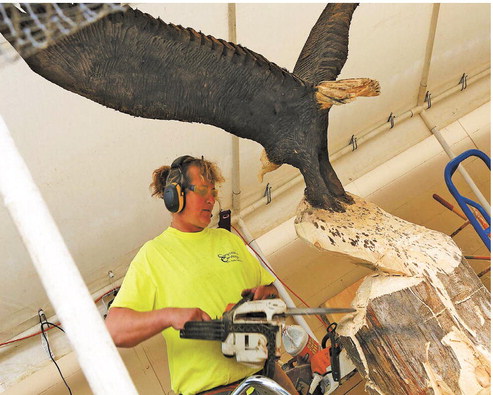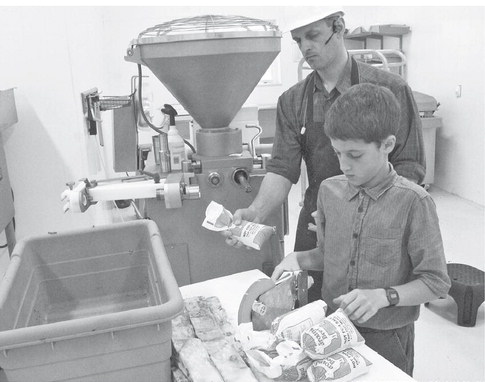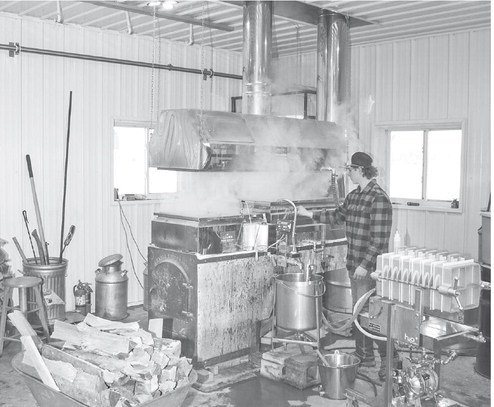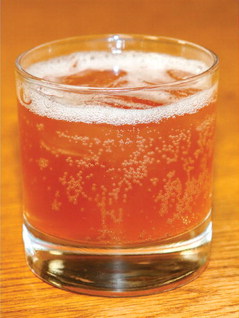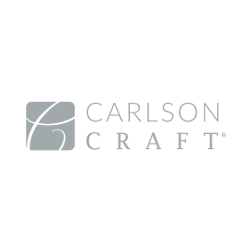Handcrafted knives, made with purpose and pride
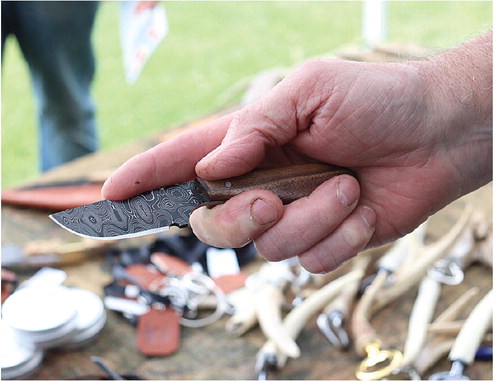

Crafted intentionally with form and function in mind, each knife made by Mike Leonard of Spencer tells a unique story. Although he didn’t intend to start his own knife business, like so many other small businesses, it came out of a personal venture that he ended up sharing with others.
“When I retired, my wife asked me what I was going to do to basically keep myself out of trouble. And I told her I was going to make myself a knife. And she basically told me, ‘You’re nuts. You’ve got too many knives already.’ And I said, ‘Yeah, but I’ve never made one.’ So I started to make one. Well, a friend found out I was making a knife and he seen it and said, ‘I’ll buy that from ya.’ I thought, ‘Geez, I didn’t plan on selling it.’ But he made me an offer and I figured, ‘Well, I can make myself another one.’ So I sold it to him. He shows another guy and by word of mouth it blew up into something I never would have imagined it would have.”
Leonard made his first knife in March 2021. Since then, he has crafted more than 220 knives, including hunting and fillet knives, kitchen knives and cleavers. The majority of his clients are deer and elk hunters. He has sold to customers in 14 states, including as far away as Washington state and Florida. Many of his knives are given as gifts or donated to charity, such as raffle prizes to support local fire departments or veterans’ groups. He makes a few stock models to take to events like craft fairs and farmers’ markets, but the majority are custom builds. His main advertising is word of mouth and connecting with other people with the same interest on online forums.
Leonard, who has worked with steel his whole life and done a lot of welding, quickly took to the art form that is knife-making and became passionate about producing a high-quality, durable product.
“My quality has grown over time. I’m very fussy at what I do,” said Leonard.
It takes a minimum of 30 hours to make each knife, from start to finish. Each knife starts as a simple sketch. Leonard will create a profile and design for the knife, based on any requests the customer has. For example, they may want a thumb notch or a finger swoop, a slight indentation in the blade where their pointer finger is going to rest. The purpose of the knife will determine its shape and size. The longest he’s made is 15 inches.
Once Leonard gets the design how he likes it, he creates a cardboard cut-out which he sends to the customer to have them test it out. Once he makes any requested adjustments and gets the goahead, it’s time to cut the blade out of a blank of steel.
“I rely on several U.S. top steel manufacturers. They are all U.S. products except for one stainless steel I have that comes from Sweden that’s used to produce the highest quality cutlery,” he said.
“I do not use inferior products. I research them and make sure I’m getting the best I can possibly get… I have so many people tell me, ‘My son is going to get this and then his son is going to get it.’ It’s going to go down through the generations. And that’s why I build them the way I do, so they do last for generations,” he added.
Leonard uses a band saw or 4-inch grinder with a diamond blade to cut out a rough profile of the blade. Then he uses his 2-inch by 72-inch belt grinder/sander with various attachments to hone the piece down to what he wants. One of the attachments is a surface grinder he uses for the blades and handles.
“A lot of my wood is sourced locally and a lot of it is larger stock — 2 inches thick, an inch-and-a-half thick. I need a handle that is just a hair over a quarter-inch thick. So I’ll cut it with the band saw; then I’ll put it on that surface grinder to get it completely smooth and level on both sides, and to the thickness that I want.
“That was a big investment when I purchased the 2-by-72, but it was a game changer as far as what I could do and how long it took to do it.”
He said with his small grinder, it would take probably two hours to make the blade, but that time was reduced to 15 minutes with the 2-by-72 grinder. He can also be a lot more precise, especially when it comes to fine-tuning the taper of the blade.
“I’ll scribe a line down the center of the blade and work my way towards it. That when you look at it, both sides are equal. It’s symmetrical,” he said.
After he finishes the blade, it must be refined by fire. Leonard uses a heat-treating oven to change the molecular properties of the steel, increasing hardness and strength.
“Every steel has its own recipe, if you want to call it, to bring it up to a desired temperature, hold it there for a desired amount of time, and then take it up to its final temperature and hold it there for x amount of minutes, again depending on the steel,” said Leonard.
“When I first started, I used just a fire brick forge and that was fired with map torches. And the brick was kind of like what you’d line a fireplace with. I could do high-carbon steels and that was about it. And I started getting requests for steels that I could not use, so that’s why I got a heat treat oven that was made specifically for knives.”
After coming out of the heat treat oven, high carbon and stainless steels are handled differently. High carbon steel comes out of the oven at 1,500 degrees Fahrenheit. Leonard will immediately dunk it in a bucket of oil for seven or eight seconds to cool it. Then it goes into the tempering oven. The tempering process hardens the blade to prevent brittleness.
“Again with tempering, every steel is a little bit different. And depending on the hardness you want to get out of the steel, it’s a different temperature,” said Leonard.
The blade goes through multiple heating and cooling cycles, being allowed to cool off overnight in between cycles. Trying to expedite the process compromises the strength of the blade.
“I wanted to test that. So one of the blades I did, it was just a stock knife I was making. So I did the first temper cycle, let it cool the way it needed to, put it back in, and after the second tempering cycle, I wanted to keep working on it. I didn’t want to wait until the next day to let it cool down. So I figured, ‘Let’s try to cool it down.’ So I took the air hose and cooled it down so I could work on it. I did my test where I drove it into the plywood. No sooner I started pushing it over, I snapped the tip right off. I learned my lesson of ‘Well, I’m not going to short-cut it no more,’” said Leonard.
Stainless steel is handled differently. It must be initially heated to 2,000 degrees and held there for up to half an hour. After coming out of the heat treat oven, it does not get dunked into the oil. Instead, it is sandwiched between two 1-inch thick aluminum plates and Leonard blows air between the plates to cool it. It only takes a couple of minutes for the metal to go from 2,000 degrees to cool enough to handle. Then the blade goes through what is called cryogenic treatment. It is put in a freezer kept at -5 degrees for 24 hours. This binds the molecules in the metal together. When it comes out of the deep freeze, it’s ready for tempering like any other knife, using two-hour cycles.
After the blade is fully treated, Leonard attaches the handle, often customized with a special wood the customer requests. Leonard uses a variety of woods, mostly local, although he also uses specialty woods such as olive wood from Bethlehem, Israel. He uses pins to attach the blade to the handle — sometimes hidden, sometimes visible.
Once the handle is attached, he applies a coat of epoxy and lets it cure. He uses an industrial-grade epoxy which has a very high tensile strength, is UV resistant and water resistant. The recommended cure time for the epoxy is eight hours, or 24 hours if you want it to cure even harder.
“I always do the full 24 hours. That way I know it’s not going to fail,” said Leonard. “When I clamp the handle scales onto the blade, I’ll let it sit for 24 hours before I do anything with it.”
After that, Leonard does a final sanding to ensure a smooth finish. He then makes the sheath. He has made a variety of different designs, including sheaths with a woven look, created by using a leather stamping tool. Lastly, he sharpens the blade before presenting it to his customer.
In the process of making the knife, Leonard ends up with excess materials that he always tries to find a use for. Since a lot of his knives are hunting knives, they may have a piece of an antler for a handle and he uses the rest of the antler to make a knife display stand. He also uses extra antler pieces for bottle openers and back scratchers. Extra pieces of steel he uses as pendants for necklaces, He also makes his own conditioner for the leather and steel, using shea butter, beeswax, and lanolin. It can be used as lip balm because it’s all natural ingredients.
Every knife has a story One of Leonard’s favorite parts of his business is getting to hear the stories of what his clients intend to use their knife for.
“There’s stories behind a lot of ‘em and it makes me feel good to hear the story,” said Leonard.
He takes pride in combining functionality with artistry to create just the right item for each client.
“Probably one of the most unique knives I’ve made is on a tuna boat in New Jersey,” said Leonard. “The gentleman that I built it for got ahold of me. He owns a tuna boat and wanted a fillet-style knife for cutting up his tuna. Normal fillet knives are pretty flimsy and have a real flexible blade, but he wanted a fillet knife that didn’t have as flexible of a blade. So I came up with it and made it for him. Knowing that it was going to be used on a boat for tuna, what I did for the handle is I bought some ground-up seashells and put them into a clear epoxy resin, and that’s what the handle was.
“Later he got ahold of me and said he wanted a blood knife. I said, ‘What is it?’ He said, ‘It’s a knife that you use for tunas. Behind their pectoral fin, they have a main artery. So what they do when they catch one is they want to bleed it out right away because that helps keep the meat fresher. So they don’t want to poke in too far because they don’t want the blood going into the meat. So just by having that short blade, they punch it in behind that artery and it bleeds out. I said, ‘Oh, I can make you one’ and put the same type of handle on.”
A lot of Leonard’s clients want a knife to give as a personalized gift for a friend or family member. For example, he made four matching knives for military buddies who were having stones placed at The Highground Veterans Memorial Park. The knives were identical, except each had their branch of service and nickname etched into the blade.
Leonard had another client from northern Minnesota who had an elk antler in his basement from an elk he shot 20 years ago. He asked for a knife with a handle from that antler and Leonard agreed.
“[My client] said, ‘It [the rack] has been in the basement a long time. It might not be very good.’ But anyway, he got it to me. I started taking a look at it and the antler was about shot. Antler is very hard. When I drill holes in it, it stinks to high heaven and is very hard to drill. But this one, I was able to take a pencil and push a hole through it because it was just that soft… I was able to salvage it for him. I dug out all of the junk out of there and filled it with epoxy. And that meant a lot to him because it was from an elk he had shot many years ago. And there was enough salvageable material that he had me make a knife for each one of his daughters.”
Sometimes Leonard is surprised with how people react to his work. As an example, one client requested a knife from Leonard and paid upfront for it, which isn’t the norm. Leonard asked him if he wanted to see pictures and videos of him working on the knife, and he said no. This surprised Leonard somewhat because normally people enjoy seeing the progress along the way. But, no matter. Leonard completed the knife and sheath and his client came to his house to pick it up.
“He’s looking and looking at the knife and not sayin’ much. And I was kind of worried he didn’t like it because he wasn’t saying much. I finally asked him, ‘Well, what do you think?’ And he started talking and his voice was breaking. He sounded like he was going to cry… I finally asked him, ‘What’s wrong?’ And he said, ‘I just love it.’ He was just so happy with it.
“So that was a very memorable moment. Again, there’s a story behind it. It might not have meant a lot to anyone else, but it meant a lot to me.”
Leonard can be found on Facebook, Instagram, and YouTube by searching “Tool’n Knives.” His YouTube channel includes videos of him showcasing the quality of his knives, whether that’s showing how clean a cut a knife can make, or pounding the tip of a knife into a piece of wood and then bending the knife forwards or backwards to see if the blade will snap.
“I used to watch the TV show, ‘Forged in Fire.’ And I thought, ‘I’m going to test my knives, just to make sure. If it’s going to have my name on it, I want to make sure it’s going to last and be tough,’” he said. “I have had people tell me, ‘Well, after I seen that video I wouldn’t hesitate to buy one of your knives.’ So I’ll keep doing them… People like watching and enjoying the process of how the knife is being built.”
Leonard can be reached at tooln98@gmail.com or by calling 715-316-2635.
